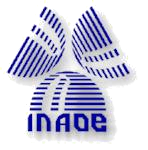Instrumentation
The current suite of LMT instrumentation
provides a combination of broad-band bolometer cameras and heterodyne
array receivers, single-pixel instruments and a versatile
digital autocorrelation spectrometer.
Some of these instruments (SEQUOIA, RSR, and AzTEC) have already
been completed and successfully commissioned on other (sub)millimeter
telescopes (FCRAO 14-m, JCMT, and ASTE). In
addition to the first-light instruments, summarized below, a program
of instrument development continues to take advantage of technological
advances in the on-going effort to provide the next-generation
of LMT instruments which will be installed a few years after the start
of scientific operations. Additional information on the LMT
instrumentation can be found at the web pages of the FCRAO
Millimeter Wave Instrument Lab
and
Continuum Detector Laboratory.
Heterodyne instruments
SEQUOIA
SEQUOIA is a cryogenic focal-plane array of 32 pixels, arranged in
dual-polarized 4x4 arrays, that operates in the range 85 - 116 GHz.
The arrays which are feed by square horns separated by 2F\lambda are
cooled to 18K and use low-noise Indium Phosphide (InP) monolithic
microwave integrated circuit (MMIC) preamplifiers designed at UMASS to
provide a characteristic receiver noise of 55K in the range 85-107
GHz, increasing to 90K at 116GHz. SEQUOIA has been the workhorse facility
instrument for the FCRAO 14-m telescope for many years, and it will
remain the largest heterodyne spectral line camera operating 3 mm
when it operates on the LMT.
Redshift Search Receiver (RSR) System
A novel MMIC-based receiver has been designed to maximize the
instantaneous receiver bandwidth to cover the 90 GHz atmospheric
window (75-111 GHz) in a single tuning. The receiver has four pixels
arranged in a dual-beam, dual polarized configuration. Orthogonal
polarizations are combined in waveguide-based orthomode
transducers. Beam-switching on the sky is achieved with a fast Faraday
rotation polarization switch and a wire-grid to interchange the
reflected and transmitted beams to each receiver. This ultra-wideband
receiver typically achieves noise temperatures < 50K between 75-111
GHz. Because of the fast beam-switch involving no moving mechanical
parts, the Redshift Search Receiver will have exceptional baseline
stability, well-suited to the detection of redshifted transitions of
the CO ladder from star-forming galaxies at cosmological distances. A
innovative wideband analog autocorrelator system which covers the full
36 GHz with 31 MHz (100 km/s at 90 GHz) resolution serves as the
backend spectrometer. The RSR has been commissioned on the FCRAO
14-m telescope in 2006 and several papers reporting early science
results have already been published.
1mm
SIS receiver
A single-pixel dual-polarization SIS
(superconductor-insulator-superconductor) receiver is under
development to provide high-sensitivity in the 210-275 GHz atmospheric
window. This receiver is to be used for initial commissioning and
scientific use of the 1mm window. Using a sideband separation scheme
to provide 8 GHz of instantaneous bandwidth in each sideband, this
instrument will have a single-sideband system temperature of < 100K.
Continuum instruments
AzTEC
AzTEC is a 144-pixel millimeter-wavelength camera that will operate at
1.1mm. Radiation is coupled to Si-Ni "spider-web"
bolometers, arranged in a close-packed hexagonal pattern, with an
array of conical feedhorns separated by 1.4 F&lambda. Scanning of the
telescope or movements of the secondary
mirror provide fully-sampled images.
The detector array is cooled to ~250 mK via a three-stage,
closed-cycle3He refrigerator. The
field-of-view of AzTEC on the LMT is 2.4 sq. arcmin and, with a per
pixel sensitivity of ~3 mJy Hz-1/2 and FWHM
beam-size of 6 arcsecs at 1.1mm, AzTEC will have an extremely fast
mapping-speed of ~0.36
deg2/hr/mJy2.
AzTEC was successfully installed and commissioned at the JCMT in June
2005, and undertook an extensive program of guest observations on the
JCMT in November & December 2005. AzTEC has also operated as a
guest instrument on the Atacama Submillimeter Telescope Experiment (ASTE)
at the ALMA site in northern Chile for two winters (2007-2008).
The AzTEC camera has been
developed at UMASS Amherst in collaboration with the BOLOCAM
instrument team. More information about the instrument is available
at the AzTEC website.

